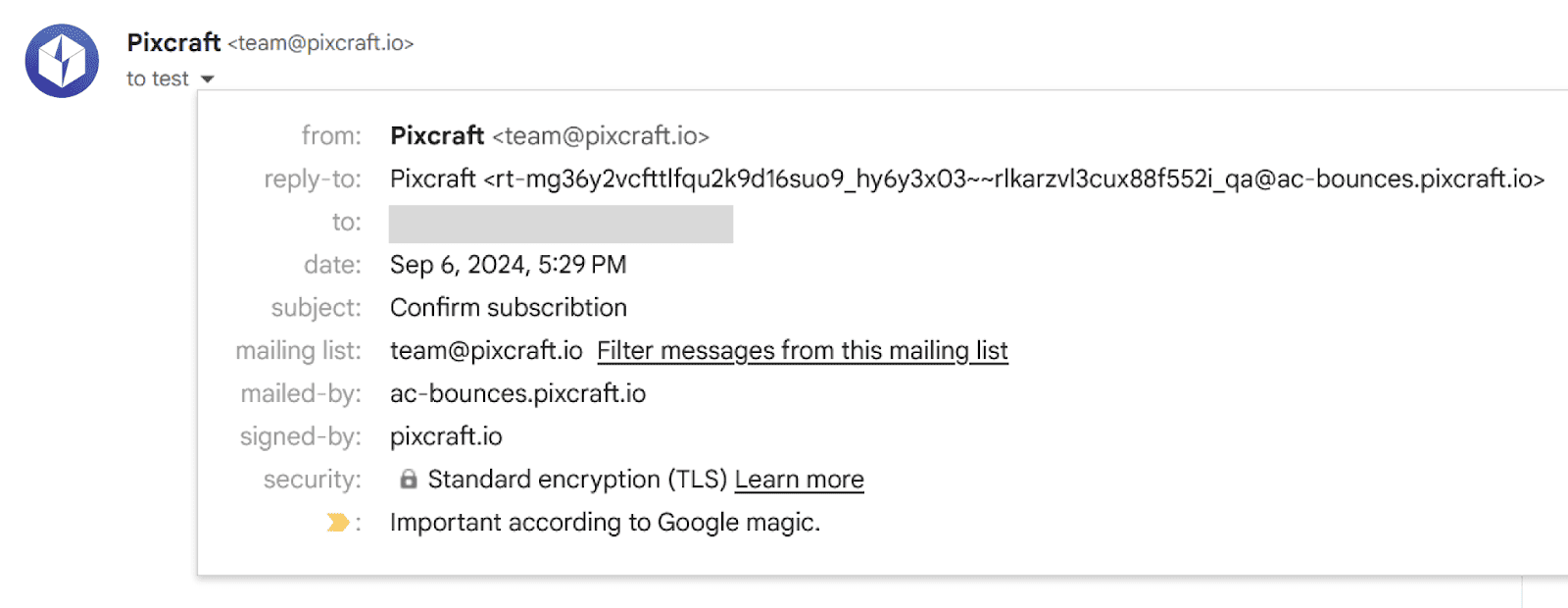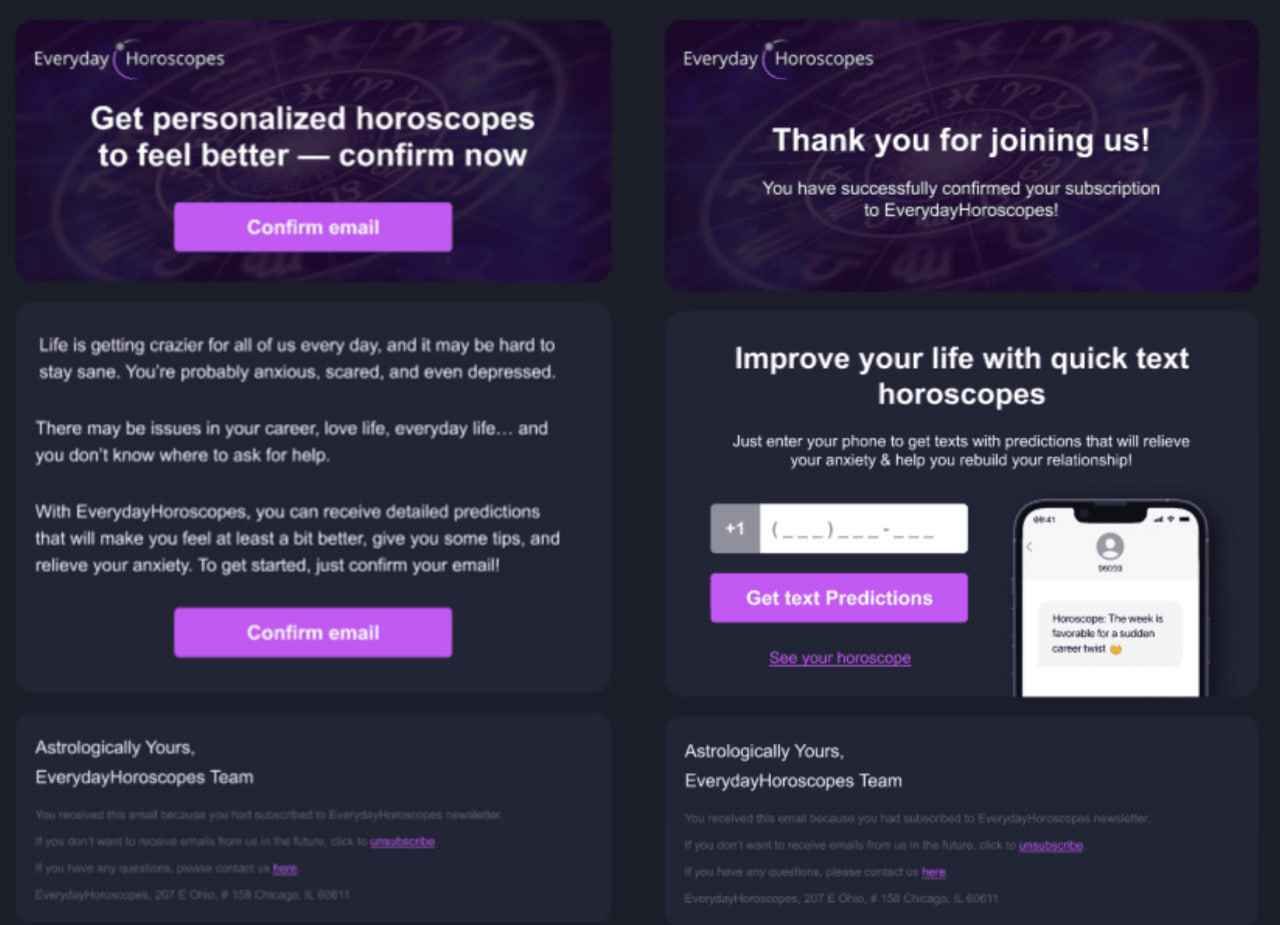How to Implement AMP Emails into Your Email Strategy
Imagine your emails not just as text, but as "mini-sites" where you can scroll through product galleries, fill out forms, or even place orders directly. All of this is possible thanks to AMP technology.
In this article, we will explore what needs to be done to obtain permission to send AMP emails and how to use such messages in marketing.
What You Need to Start AMP Email Campaigns
The most important thing is to obtain permission from email providers that support AMP (Mail.ru, Gmail, Yahoo, AOL) and to comply with all technical requirements for sending:
Set up a restrictive DMARC policy. When setting up a DMARC policy, you need to choose one of two options: quarantine or reject. Reject provides maximum protection and completely blocks emails that fail the verification. Quarantine sends such emails to the spam folder.
You also need to ensure that the pct parameter is set to 100%. This means that the policy will be applied to all sent messages. For DMARC to work correctly, you also need to configure SPF and DKIM correctly.
DKIM signature. The sender's email domain must match the domain specified in the DKIM record. Gmail has more flexible requirements: it is sufficient for the second-level domains to match. If your signature specifies the domain company.com, then emails from addresses where after the @ sign there is company.com or any subdomain of this domain (for example, department@support.company.com), will successfully pass the check.
The sender's email domain should match your website's domain. Some companies use separate subdomains exclusively for sending emails, without hosting any web pages on them. In this case, you'll need to set up a redirect from the subdomain to the main site.
The sender's reputation in Gmail Postmaster should be at least average. For Mail.ru, the ratio of sent emails to opened emails, as well as the number of complaints and messages deleted without being read, are important factors. Exact criteria may vary, so it's recommended to follow general guidelines. For example, you should not exceed a certain complaint rate (1.1% complaints for up to 10,000 emails per month, and 1% complaints for up to 500,000 emails per month).
Unsubscribing from the mailing list should be easy. Every template, including interactive emails, must contain an active unsubscribe link. The process should be as simple as possible and take minimal time. Users should be able to unsubscribe with a single click, without the need for additional authorization or confirming their decision. If you wish to ask for a reason, you should first allow the user to unsubscribe and then ask any follow-up questions. For the recipient's convenience, each email should include a List-Unsubscribe header, enabling readers to easily unsubscribe directly from their email service interface.
Additional Requirements for Mail.ru and Gmail
Gmail:
- To successfully pass moderation in Gmail, your emails must be protected with TLS encryption. To check if encryption is enabled, send a test email to your Gmail inbox. Open the email, click on the "to me" button, and find the encryption information in the dropdown menu. If TLS is not enabled, contact your platform's support service to activate it.

Mail.ru:
- You’ll need to set up the Mail.ru Postmaster service. Make sure to pay special attention to how you handle FBL reports, which means automatically unsubscribing users who report your email as spam. Most email marketing platforms will take care of this for you.
- To evaluate the quality of your email campaigns and your sender reputation, Mail.ru asks that you send at least 5,000 emails each month for three months.
How to Prepare an AMP Email
To get the green light for sending AMP emails, you need to establish yourself as a trustworthy sender and show that you know how to use AMP technology effectively. To do this, send a request to the email services along with a real interactive email that meets all the technical requirements.
You’ll need to prepare two versions of your email: an HTML one and an AMP one. PixCraft offers three tools to help you create these messages: a visual email builder for your campaigns, a Figma plugin, and the TJML framework. You don’t need any special coding skills to generate the correct code for both versions.
Test your email to ensure it meets all the necessary criteria. If everything looks good, fill out the application and send the emails to the email providers. It’s important that the emails closely resemble real ones—you should avoid using the word "test" or placeholder text.
For more information on testing AMP emails and completing the application, check out the article.
How to Use AMP Emails in Marketing
AMP email technology can be effectively integrated into standard email marketing workflows. For example:
1. Confirmation Emails: Interactive elements within the email streamline the user journey. You can prompt readers to confirm their subscription directly in the email and provide additional information—such as their date of birth, phone number, or gender. In the example below, the use of interactive components (confirmation buttons and forms for entering a phone number) led to a phone number submission conversion rate of 40.27%:

2. Welcome Emails. Using AMP elements in welcome messages gives a modern and innovative impression of your company.
3. Emails for Re-engaging Inactive Users. Interactive elements in reactivation emails, like mini-games or surveys, engage users in dialogue and increase the likelihood of their return. You can find an example of using AMP for reactivation in the article.
4. Regular Newsletters. AMP technology enables the creation of dynamic emails with content that updates in real time. This is especially useful for displaying current information such as prices, product availability, or promotions. An AMP email remains live for 30 days, after which a static HTML version is shown. This is achieved using the AMP List component.
Key Takeaways
To successfully implement AMP campaigns, you need to adhere to the technical requirements of email providers. You'll also need to demonstrate to these providers that you know how to use AMP technology by sending a real interactive email.
You don’t have to completely overhaul your current communication strategy to adopt AMP; you can simply add AMP versions to specific emails. This approach allows for a gradual transition to using AMP without requiring significant effort.
With the Pixcraft email builder, you can easily create effective AMP emails without any specialized knowledge.
